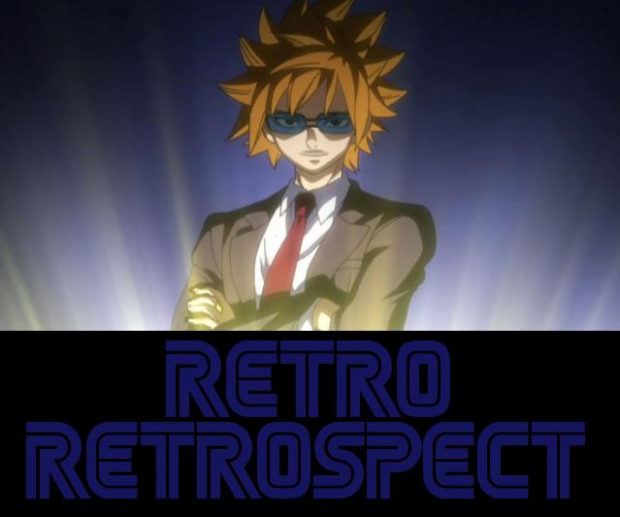Welcome to another Endless Wardrobe news report and today is my birthday!
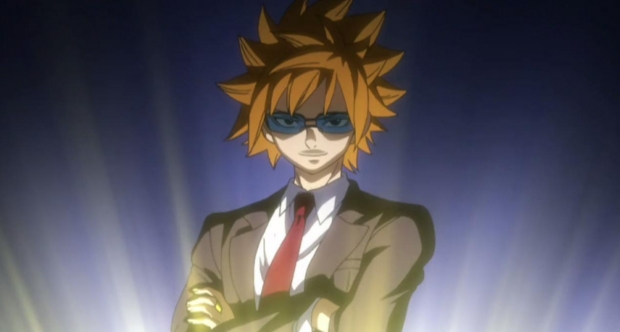
Happy Birthday
I'm 27 years old today, here's hoping for a good year and thanks to everyone who sent me Birthday messages today.
Now back to Business
Cartridge Diaries Pokemon X & Y Begins soon staring OC Giro & his assistant Samantha as they go through the Pokemon World of Kalos.
Walk of Fame will finish it's latest theme and continue moving onto it's next theme.
Victory Script continues with the Grand Ball Chapters as we go to each current character along with the completion of Sunny's chapter & Tsuki's chapter.
Reviews for classic elite anime will begin alongside a few I'm planning.
Cartoon Vault has a corker lined up.
I try and save Johnny Test from scrap.
While I haven't done many top tens for a while I hope to bring up a few more.
Speaking of Pokemon X&Y
A small follow up to the previous list of five likes & dislikes of Pokemon
The designs of the Gym Leaders & Elite Four have been a bit hit and miss, they don't really strike a cord with me.
The Fairy Type isn't too broken, I'm pleased that Poison types finally get an extra type to be strong against.
Mega Evolution is a nice addition and some of the designs have been brilliant, although without spoiling anything, a certain design is now going to be fanart bait for a number of months.
The Kalos Pokedex is huge, thank you Game Freak.
Customization is welcome but I dislike the time it takes to get decent clothes and one particular store I don't even know how to access.
The new Pokemon are good and there's barely 70 new ones, Gameplay over volume for this Generation.
Okay the default running is actually default Roller Blading, it's a little hard to handle at first but it's easy to get used to, although I wish it came with a slow down button.
One new thing I'd like to add is the concept of tipping. What benefit is it meant to give you? It's nice that you can use money for much more than just in game items and you actually do a job in a fancy hotel for extra money, but tipping in some cases feels a bit off.
There will be extra bits once the new anime premiers so keep an eye open.
Despite my age I don't actually hate modern anime but there are some trends that need to stop and all will be clear in this review on Majikoi.
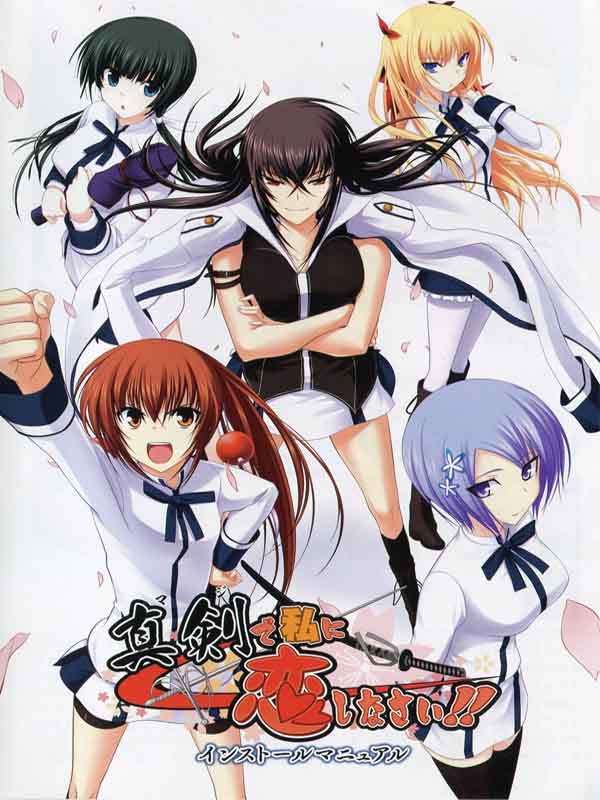
Majikoi is based on a visual novel/hentai game where male lead Yamato Naoe a self proclaimed pervert can choose between a variety of girls who each know a certain combat skill.
It starts off in fantastic fashion with a big school battle between classes and were introduced to the cast one after the other, there are a lot of characters so it's better just to introduce the five love interests and Cookie the robot.
We start with Momoyo who is a larger than life and battle crazy girl, fighting with her bare hands and using super powers like a Saiyan warrior. Her sister is Kazuko who does nothing but train and for some reason is nicknamed "Doggy". Miyako is crazy as hell trying to sleep with Yamato at any moments notice, she's the one usually seen with Cookie the robot who looks very retro and usually gets dragged into everything. Next is token foreigner Christiane who other than speak gratuitous German is into old period dramas; and finally a character who will certainly be on the Walk of Fame very soon, her name is Yukie Mayuzumi; how do I put this? She speaks to her phone strap called Matsukaze who resembles a pinata horse but is actually historically the horse ridden by Keiji Maeda. It's unclear whether Matsukaze is a spirit or Mayuzumi is using ventriloquism to really express her real feelings without saying them herself, but it's a clever design and earns a lot of serious points in my book.
You can probably tell it's a harem series but it doesn't always stick to predefined tropes, Yamato never feels bothered by his female entourage (Even Miyako) and he's actually intelligent and is a believable character, the other male characters aren't so bland that you'd forget them either and there is enough good action and high tension fighting to really sell well so why the poor comment at the start?
Because it tries to be intelligent.
A basic rule for all harem anime is to have plenty of fanservice along with a genuine love dodecahedron or whatever number of girls involved.
Equally a basic rule for martial arts anime is to have intense fighting.
Both are dumb genres and don't require a thought process to enjoy it but Majikoi after the half way point tries to get political to the point where the series is trying to force us to care about the state of the country.
I get that political stories often get forced into martial arts anime to appear more intelligent but at least when they tried it they were easy to ignore because we still had good fighting; there isn't enough episodes in Majikoi to try something that complex when the harem stuff quite often creates sudden mood shifts, this includes the ending as well.
It's a shame, it had great foundations and a brilliant dub with allstar casting including actors I thought previously retired, but this series represents a major flaw in modern anime and a number of other shows I've reviewed recently, for everything they get right they then try something that ruins everything. In Mayo Chiki it was failure to resolve the plot, in Okami-san it was the need to build up a story only to fall flat when it realized it ran out of episodes, with Majikoi it was thinking that it's viewers were intelligent enough to understand a political story within a martial arts, harem anime based on a hentai game, again it runs out of episodes only after giving us the whole political story and you can't help but feel disappointed that you didn't get enough action or fanservice.
Final Verdict: Have to relegate it to budget anime I'm afraid, it makes you follow a plot that has no business in the show in the first place and your ultimately left unsatisfied.
This entry was inspired by KyraChan's little debate over which is better, Pokemon or Death Note, and I argued that Death Note doesn't warrant talking about these days while Pokemon is still a talking point today but thinking over my comments, I realized that Death Note isn't the only anime like that and many anime that were popular during their initial run are barely mentioned anymore, so what happened to the anime that were once popular staples of the industry? Lets have a run down.

1. Akira & Ghost in the Shell
Akira used to be the one series other than Dragonballz that people used to say was the best but these days it's content has been done better by better shows. Equally Ghost in the Shell is highly rated but has fizzled out of form for the last five years, it doesn't help that it's a source of inspiration for The Matrix who for an icon of Sci-Fi film making hasn't budged since the Trilogy ended in 2003.
2. Cowboy Bebop, Trigun, 90s Anime in General
Cowboy Bebop is highly rated as the greatest anime of all time and it's hard to argue that case unless your Japanese because in reality it didn't do as well back home as it did in America mainly because the content is more understandable to a Western Audience, but it hasn't done much not even warranting a mention these days. Trigun has a similar problem, in fact a good portion of 90s anime that's not set in Japan are not mentioned anymore.
3. Inuyasha
Inuyasha was once the most popular anime in the world way before Shonen Jump clawed back their crown but these days a good portion of young fans won't know what Inuyasha is or have only received it's legacy which isn't a pleasant one, but there's room on another entry on why that is another time.
4. Haruhi Suzumiya & Lucky Star
Remember when Haruhiism was a trend? Not these days, the trend plummeted as quickly as it came in and poor old Lucky Star is starting to be dragged into the same pit of oblivion.
5. Full Metal Alchemist
Has been permanently disowned by the fanbase because of Brotherhood which is obnoxious and very unfair.
6. Death Note & Code Geass
With nothing left to run on the series, the actual Death Note is not as shocking these days since Madoka Magica & Attack on Titan have been argued to be better shows. Code Geass hasn't had much mention in a while either.
7. Yu-Gi-Oh
The Abridged Series has labeled the franchise an absolute joke and has practically died a sudden death.
8. Other notable mentions
Negima has stepped out of the spotlight along with Harem Shows in general.
Slice of Life shows are not popular right now.
And while Shonen Jump still runs strong, the enthusiasm for it's top four shows is dropping.
Ghibli Films are still popular but are losing momentum and might find it difficult post Miyazaki.
Endangered
Gurren Lagann: Might be outclassed by it's owner's new show Kill-La-Kill.
Gundam: Providing it avoids becoming a toy anime it should survive.
Evangelion: Running out of ideas to flog without destroying it's credibility.
Fairy Tail: Since the threat of it being cancelled it's starting to lose momentum.
Sailor Moon: It might struggle against it's new rivals seeing as Madoka Magica has changed the playing field.
Tiger & Bunny: Considering how it ended, it's hard to continue from where it is.
Soul Eater: Hanging on for dear life.
Escaped
Black Butler: Gothic fashion is still in and is still a cosplay favorite.
Ouran Host Club: Is still popular surprisingly.
Berserk: Why? It's rubbish.
Higurashi: Not as much as the others but still holding better than most.
Rurouni Kenshin: Successful thanks to a good Live Action adaption.
Anyway you get my point, a lot of shows which were so high ranking back in their day are hardly mentioned anymore. It'll take a lot of time and effort to pin point why this has happened especially to some of the best shows of all time, but seeing as I've grabbed your attention it might be time to start reviewing some heavy hitters of the industry, so expect some big name titles in my next few reviews.
This is a review for Samurai Pizza Cats but to explain the title, that is the Japanese title for the show and this review is for that version and not the gag dub to avoid confusion. With that disclaimer done, here is my review on Kyatto Ninden Teyandee.
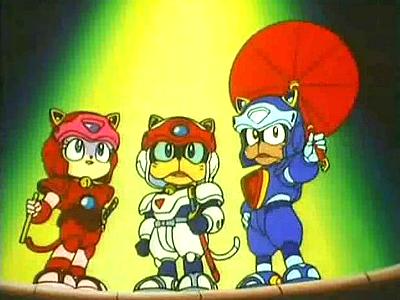
We begin the series in Edoropolis, a modern day city mixed with feudal Japan populated by robot animals. This town is led by Shogun Iei Iei Tokugawa whose pretty much lost all his screws in terms of mindset, his Prime Minister Korn is plotting to overthrow him with aid from a family of ninja crows led by Gennari & managed by Karamaru; they do so with various plots often involving a large robot Oppressing the people and using the Shogun as a scapegoat, or trying to uncover other things like weapons or large sums of money, anyway to overthrow the Shogun.
The Chief of the Palace Guard Wanko, decides to form a team of Ninjas to combat the evils of Lord Korn; they are the Nyankees who work under disguise as Pizza Delivery men at a popular restaurant called Pizza Cat which explains where that comes from in the first place.
The team of three consists of Yattaro who plays the typical hero lead and is usually the one to finish the battle with his final attack, Pururun the only female who to be honest is typical female lead material and Skashee the hopeless romantic that makes an ideal third character, to be honest not much changes in 23 years, we still get teams like that and one only has to look at Pokemon's regular lineups over the years to see.
The restaurant is managed by Otama who takes in all the communications and launches the Nyankees by means of a clock tower gun. Couple of other characters are Omitsu a kind sheep girl who sprays out missiles when she's upset, the rescue squad consisting of four other ninja cats with special equipment specific to certain situations, the spoilt Princess Usako, the mother & son who appear once an episode and state the obvious and the Narrator who always speaks with the same Tatsunoko catchphrase "Allow me to Explain"
The series is basically a robot of the week affair; the plot happens and the Nyankees sort it out and ending in the same way each time with only a couple of more important plots breaking the chain. There's some slapstick in places and the retro music stops the combat from getting repetitive. But there is one thing about this show which makes it so strange is that it was even dubbed at all.
This show is very, very Japanese and even translated into subtitles it's blatantly obvious that this show would be lost on an American Audience, especially when the Ninja Turtles were taking most of the Cartoon viewing at the time. The fact that Saban barely received any of the translation notes was a bit of accidental genius as the team then decided it was best to play it as a gag show to get around the fact that a) they had nothing to translate with and b) the weirdness could easily be shown as a gag series, the title Samurai Pizza Cats refers to the name of the restaurant crossed with the misconception that the characters were Samurai mainly due to their weapons consisting of Kitana, a flute & an umbrella with a sword inside it.
As a gag series in the states it surprisingly worked mainly because the Ninja Turtles made the Animal fighting shows popular and the 90s had so many different ones that Samurai Pizza Cats fit right in but how does the original hold up?
Well I'm not one for over done formulas this day and age but there is enough in the series to entertain everyone and if you can get past the heavy Japanese barrier it's very enjoyable.
Final Verdict: It's an easy show to watch if your an anime veteran but may be lost on a newbie especially when the original is packed to the brim with Japanese jokes, plots and themes. I recommend the sub for veterans who want to see what the original was really like and I recommend the gag dub for newbies and nostalgia fans who enjoy bonkers cartoons.
I'm usually immune to the strangest concepts but this one certainly makes a lot of effort to convince me that the Japanese are weird. Today's review is on Akikan.
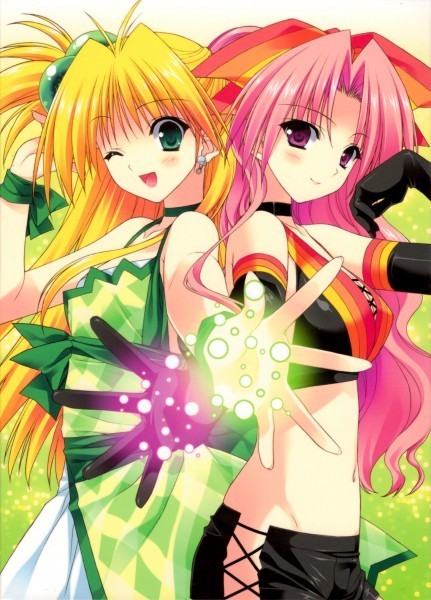
Now be prepared for a weird plot.
Kakeru Daichi is a normal perverted guy until the can of Melon Juice he drinks turns into a beautiful girl who is called Melon for convenience sake.
He has been chosen for a government project called the Akikan Elect which is meant to decide which can is better, Aluminum or Steel, to decide this the Akikan's themselves must fight it out to decide but the story decides to do away with the fighting very quickly to avoid becoming Mai-Hime and become a comedy romance anime instead which doesn't really change things an awful lot.
The problem is Akikan seems to be caught between two genres, the novelty fighter & the romantic comedy, it equally doesn't help that it sometimes delves into harem territory especially as the cast grows more female characters.
But to Akikan's credit at least it tries to be different, the main male lead is not an accidental pervert but a full blown pervert which breaks the first law of Harem instantly, only two girls actually like him since Akikans only fall in love with their owners so it's less Harem and more simple love triangle.
The Akikans themselves are made up of a tsundere, a devoted servant and a super cute little girl. There are only three males in the story, one is the lead, one is the invisible friend and the other is a proud Yaoi character who's clearly in the wrong anime.
The other females are Yaoi guy's over worked secretary, the little Akikan's child minder, a feminist witch and a girl who seriously can't see how much of a pervert Kakeru is. And there's another Akikan but she's introduced so suddenly and so late that we barely get enough time to take her character in, with that in mind the ending is rushed and suddenly reverts to the action plot it started with.
It's habit of throwing in sudden changes is like the director suddenly remembering he's got a deadline and throws in something weird that ends up breaking the flow of the story, made more obvious by the sudden upgrade in art in Episode 11 or the constant breakdowns in serious tones for more of Kakeru's perverted mindset, it's a sheer mess that's poorly managed throughout. Finally to note, there is no dub, probably just as well.
Final Verdict: For such a bizarre concept it strangely manages to work but needs more care and a few more solid foundations to really work as a proper anime. I can't believe I'm actually saying this, but it needs a couple of cliches. It's bargain anime at it's finest so give it a look.
